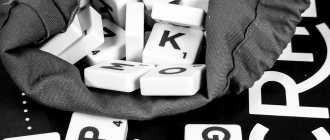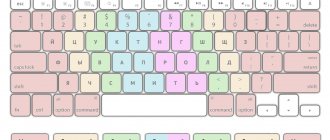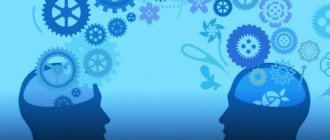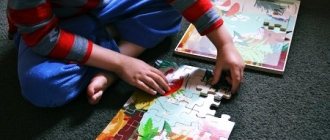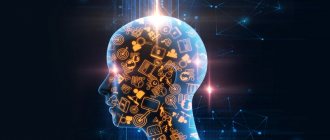How to keep a clear mind
Neurobics is a brain exercise that makes it possible to develop mental abilities and maintain a clear mind for a long time.
If the brain is not developed, then it slowly begins to degrade. The fundamentals of neuroscience were developed by Professor Lawrence Katz. American scientists have conducted studies that refute the claim that nerve cells die and are no longer restored.
Lawrence Katz, along with other scientists, proved that dendrites are depleted in humans.
Dendrites are processes of nerve cells that receive impulses from neurons.
If these processes become depleted, the nerve endings lose their ability to conduct nerve signals. As a result of this process, a decrease in a person’s mental abilities appears.
To maintain dendrites in working condition, it is necessary to perform exercises that will keep brain cells in good shape.
When exercising, neurons begin to grow new processes, thereby developing the neural network of the brain. This can happen at any age. A person’s task is to help them develop.
If a person does not want to think, but is looking for ready-made solutions, then the cells seem to freeze. Neuroscience is ready to awaken your thoughts and help you improve.
This gymnastics is not boring, even fun. She is able to paint your everyday life with new colors.
By performing ordinary, often boring actions in a new way, you will involve different senses in the training so much that the brain will begin to produce new nerve cells.
Brain training does not require any special preparation from you. You can even exercise while walking or during dinner. Once you become familiar with the principles of neurobics, you will be able to create a training program yourself using “neural practices” for the brain.
Neurobics makes it possible to engage different senses. Having involved 2 organs, one will have to perform the usual actions, and the other will have to perform a new “reading”.
In neurobics, you can perform several actions at once: combing your hair, brushing your teeth, putting on clothes, closing your eyes. You can walk down the street while simultaneously counting how many people have passed you wearing blue clothes.
The head must work
Our brain resembles a muscle, that is, if it is not given the required amount of work every day, it becomes lazy and ceases to recognize the command “think!” Scientists describe this process as follows: new synapses are formed between neurons, the cortex thickens and becomes more tortuous, then new capillaries grow, axons increase the speed of nerve signals, and functional connections between individual brain structures become more complex.
However, the brain is not as simple in structure as muscles. When performing the same type of tasks every day, sooner or later he will get bored, and then dismiss the routine as an unnecessary activity. Therefore, it is important to deceive him in a timely manner by performing special exercises.
From words to practice
When starting classes, strain those senses that were quietly dormant before. Examples of neurobics:
- Look at 2 objects, then find something in common between them.
- Write sentences with different hands, right-handed - left, left-handed - right. This exercise will help engage the inactive hemispheres of the brain.
- When you ride the subway, choose rhymes for some words.
- Change your image or the decor in your room more often. Rearrange objects, add variety to your life. Down with routine!
- Novelty will help the brain develop rather than stagnate. Change the route you take to work. Go shopping at a different store, bypassing your usual supermarket.
Activate your brain cells even with simple actions. Don't let your nervous system fade away. As a result, you will notice how your mental abilities improve and your mind becomes clearer.
We write synchronously
Memory and mind training is very important for every person. Consider an exercise that promotes simultaneous stimulation of the right and left hemispheres of the brain.
- Take two sheets of paper and two pencils.
- At the same time, with both hands, draw various figures or words, different in meaning, but the same in the number of characters.
Train your brain regularly
Constant brain training will help you maintain a clear mind and good concentration until old age. Exercise revives brain cells, which in an adult, as a rule, begin to weaken over the years.
Neuroscience accelerates self-education. A person who begins to constantly perform exercises will, as a result, very soon notice that he has begun to quickly grasp and remember the necessary information for a long time.
He stops thinking in patterns, begins to solve complex problems faster, and discovers new abilities in himself. The person will be surprised that he has such talents!
Lawrence Katz proved that a worker who repeats the same actions day after day stops thinking. And the brain, deprived of work, atrophies.
The benefits of neurobics are undoubted and obvious. Thanks to it, those parts of the brain that were “resting” suddenly begin to act, producing neurotropin.
Elderly people who regularly perform neurotraining will, as a result, maintain mental clarity and avoid the risks of developing many age-related diseases.
Play sports
It’s not for nothing that they say: “A healthy mind in a healthy body!” Even the simplest physical exercises increase blood circulation, and this, in turn, activates brain function. It is very useful to do exercises in the morning and then take an exercise break during the working day. During lunch, be sure to get up from your desk and stretch. For example, go with your colleagues to the canteen - the main thing is not to sit still. In the evening, try to walk in the park. The brain will receive more oxygen and nutrients, for which it will be very grateful to you.
Neuroscience for the brain will help raise a genius
Neurobics is very useful for restless children who fail at school. And it will help the student become a better specialist, a successful person at work and in his personal life.
Do the entire set of exercises outlined above with your children, introducing playful moments into the child’s usual life.
For example, after changing the route to kindergarten or school, ask your child to find the way himself and tell him what you should pass by.
And brushing his teeth with the other hand will seem like an unusual adventure to him, as will walking around the room with his eyes closed.
Make different crafts with your child. Turn every day into a new, exciting journey around the world.
Remember the words
Mind training tasks can be performed not only by adults, but also by children. The activity is often used in schools and kindergartens. The goal is to remember as many words as possible in the correct sequence and then reproduce them from memory.
Let's say: sun, sky, sakura, grass, blue, blooms, nature, happy, sea, constellation, sand, excitement, hot, coconut, elephant.
Initially, the exercise resembles memorizing a poem, but differs from it in that it does not have a semantic sequence; accordingly, it will be quite difficult to remember such a set of words and then reproduce it from memory.
Neuroscience for the development of thinking
Neurobics also offers a lot of interesting things for older people. Scanword puzzles, crosswords, playing chess, puzzles - will bring benefit and variety to the life of an elderly person.
An elderly person can place objects under their hands, then ask them to describe this object by touch. It will be interesting every time to come up with new recipes from ordinary products and set the table.
In a couple of months, mental abilities will begin to improve even in people who have never stopped repeating that they have a bad memory.
Neurogymnastics for everyone on concentration:
- Select an object, for example a wolf. Think about it for a few minutes. Soon your thoughts will begin to get confused. Time yourself and force yourself to think about the wolf for 60 seconds. Then complicate the task by thinking about the animal and comb your hair.
- When talking on the phone, draw neat tic-tac-toe without interrupting the conversation.
- When doing homework, count numbers from 1,2,3, etc., then back.
- When choosing products in a store, mentally count how many letters are in a word.
- Mentally draw letters while doing gardening at the same time.
- Work with the Schulte table. Draw a table. Then find the numbers in ascending, then descending order. Speed up your work with the table.
You can find apps and exercise machines that will help you develop your brain.
read books
Another habit that should have remained from school days is reading books. Only now you can choose works not from the school curriculum, but for the soul. The main thing is not to be lazy to devote at least an hour a day to this work and entertainment at the same time, maybe half an hour in the morning and evening. The book will help you develop imagination, creative thinking and memory, improve concentration - when reading, the brain works what is called “to its fullest.” At a minimum, the book will not let you get bored: imagine and analyze the characters, their actions and dialogues, try to decipher the subtext and find the moral of what you read. In this way, you can improve not only your erudition, but also your intellect.
As for specialized literature (be it medicine, psychology or nanotechnology), experts advise choosing books that do not match your professional profile. The fact is that in this case, during reading, previously untouched areas of the brain will be activated. And even if you don’t become a doctor of medicine, reading a few books will definitely force your brain to work and gain new knowledge. In addition, experts remind that there are no special books in the world that can increase your IQ - this is just a marketing ploy.
Neuroscience has taken over the world
Neuropsychologist Svetlana Novikova has prepared 10 exercises that many consider a magic wand. They will help develop attention, memory, speech, and increase self-control.
SIP of water
Charging your brain starts with a glass of water. Our thinking organ needs water to transmit nerve impulses. His reaction slows down if a person drinks little water.
Steps in place
Next comes the activation of the thinking organ for logical thinking and counting. Start walking in place, raising your knees high. At the same time, pull your elbow towards your knee. Walk quickly at first and then slow down.
Elbow to knee
Stand up straight. Pull the opposite shoulder towards the knee, first quickly, then slowly. The slower the movement, the better the head thinks.
Lazy Eights
Bend your arm at the elbow, put it forward, keep your thumb at eye level. Move your finger to draw a figure eight, starting from the center of your field of view. The finger goes up, then counterclockwise down and back to the center. Then do the same, but clockwise. Do it 3 times.
After this, clasp your hands and raise your thumbs up. Draw a figure eight with both hands.
Belly breathing
Breathing from the belly will help fill the brain with oxygen. Place your hand on your stomach. Exhale the air in short exhalations. Next comes a deep breath. When you exhale again, bend your back so that air flows into the lungs.
Funny monkeys
If your child doesn't read or write well, do this exercise. With your left hand, grab the tip of your nose, and with your right hand, grab the ear on the opposite side. Now we change hands by clapping our hands.
Crab
The child, leaning on his arms and legs, stands on the floor. Then he walks on all fours in different directions, like a crab.
Owl
The owl exercise will relieve tension in the neck and shoulder muscles. You need to grab and then tightly squeeze the muscles of the right shoulder with your left hand. Turn your head, look back over your shoulder.
Do it with the other hand. Taking a deep breath, roll your shoulders. Lower your chin to your chest. Then take a deep breath, relaxing your muscles.
Fist-rib-palm
Lower onto the table in turn: fist-rib-palm.
Glider
Sit with your legs crossed at the ankles. Bend forward. Slowly lower your arms down and exhale. Straighten up, raise your arms - inhale. You can lean in different directions, simulating the flight of a glider.
Do the moves with your child before school. You will be surprised by the effect of simple charging.
Shall we practice?
So let's start with something simpler. Read the list of items carefully (almost all vital things!). And remember. Do you remember? Scroll down and...
... and find those items that have been replaced. Please note that the order of items has also changed.
Basic indicators of intelligence
Psychologists have identified four key characteristics of intelligence:
- Depth of mind is the ability to get to the bottom of phenomena and events.
- Inquisitiveness is curiosity, the desire to learn new things.
- Flexibility and mobility - the ability to act outside the box, bypass barriers, and overcome difficulties.
- Logicality is the ability to justify one’s point of view and correctly present the material.
Some authors also consider creativity to be part of intelligence. However, this is not an entirely correct approach, because it is part of the structure of creativity. A person can be very creative, but not intellectually gifted.
Don't forget about nutrition
Decreased memory and concentration, increased absent-mindedness may be a signal that the body simply does not have enough vitamins. Indeed, many foods (especially fruits, vegetables, nuts) contain many useful elements for effective brain function. For example, beef, herring and peanuts contain coenzyme Q10, which is believed to prevent many neurological diseases. And for memory, attention and resistance to stress, eggs, liver, rabbit meat are suitable - this is what is especially recommended to eat before the exam. To improve your thinking abilities, you need to eat fatty fish, beans, greens and pumpkin seeds. If you feel a loss of energy, you should add foods containing vitamins to your diet: melon, pumpkin and carrots (vitamin A), meat, nuts and grains (vitamin B1), eggs and dairy products (vitamin B6), orange, pineapple, tomatoes ( vitamin C).

